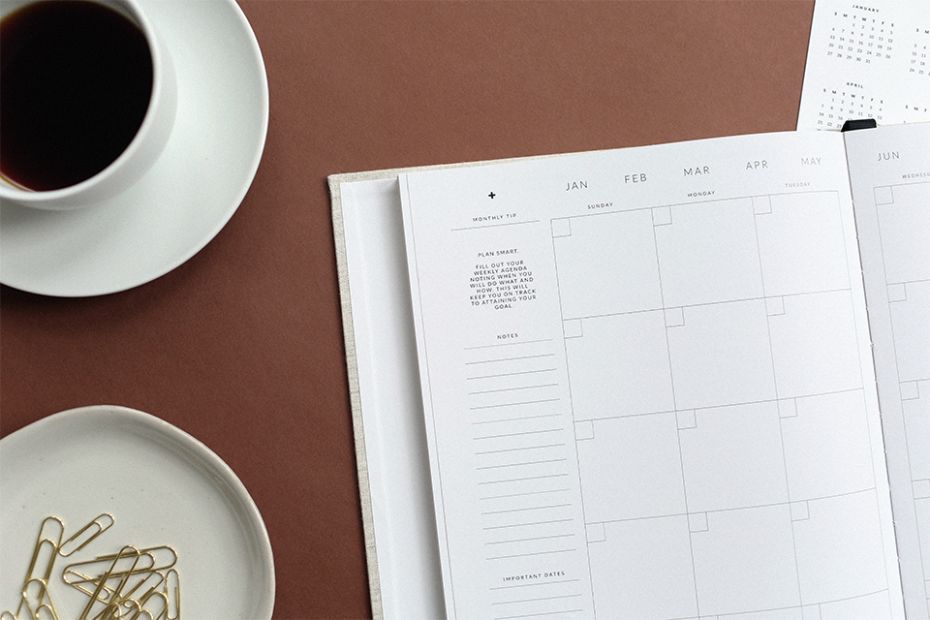No two jobs are alike. Responsibilities differ, work environments vary, and different industries have different expectations.
So it makes sense that no two workdays look the same either. How freelancers structure their day looks different from how working moms structure their day. And both of those days will look vastly different from others.
Regardless of what type of worker you are, we put together templates to help you structure your workday. These templates are meant to help you plan your day in a way that works for you. Use them as a starting point, and then adjust the hours and timeframes to customize them for your day.
For example, you may take an hour-long lunch break instead of thirty minutes or start an hour later or earlier—that’s totally fine! The important thing is to show you your options so you can tailor a schedule that will work for you.
It’s also important to keep in mind that getting a good night's sleep
keeps you sharp and improves your mood. Adults need
seven to nine hours of sleep, and the average person wakes up between 6 a.m. and 6:30 a.m. If you have kids, you may not have as much say as to when you wake up or go to sleep. We structured the schedules assuming you are getting eight hours of sleep a night.
You’ll also find in each workday template time to plan for the current and following day. Taking five to fifteen minutes in the morning and evening to plan your schedule, set meetings, and prioritize is a game-changer.
We know fire drills will pop up along with last-minute meetings, but having an understanding of your priorities will help you better structure your time at work.
The 9 to 5 Employee
9 to 5 is the “typical” workday. When most people say they work in an office setting, these are usually their standard work hours. The hours may vary from 8 to 5, or extra hours may be worked here or there, but this schedule reflects the standard 40-hour workweek. During the workday, the majority of employees take a
30-minute lunch break. This is likely to fluctuate based on the day and your workload, so feel free to adjust that time window accordingly.
Something to keep in mind when structuring your workday is the time of day in which you work best. For morning people, it’s better to do your hardest tasks and those that require undivided attention in the morning and keep the afternoon for lighter, more administrative tasks. If you’re an afternoon or evening person, the reverse is true.
How 9 to 5 Employees Structure Their Workday
6:00 a.m. Wake up
6:05 a.m. Eat breakfast / Workout / Shower / Get ready for the day
8:30 a.m. Commute to work
9:00 a.m. Arrive at work
9:05 a.m. Check emails & plan priorities for the day
9:30 a.m. Morning meetings / focused work
12:00 p.m. Lunch break
12:30 p.m. Afternoon meetings / focused work
4:45 p.m. Plan for the following day
5:00 p.m. Commute home
5:30 p.m. Networking / Errands / Dinner / Socializing / Relax
10:00 p.m. Go to sleep
Sample Workday Structure for a Working Parent or Caregiver
Working moms have a lot more to manage than their schedules and work responsibilities. They have to factor in getting kids ready, packing diaper bags or lunches, and dropping kids off at child care. Even with help from a partner, this is a lot to manage.
New moms who are currently breastfeeding have the added pressure of considering how they’ll pump at work two to three times a day. If this is you and you have your own private office or a pumping room at work, you can likely continue with your regular work schedule while you pump.
If you don’t have that luxury and find yourself in a bathroom or locker room multiple times a day to pump, plan to use that time to catch up on emails on your phone or brainstorm on a project.
Find a way to make it a productive time, so it’s less of a disruption in your day.
The schedule below will look different based on the age of your child (infant vs. school-age), how the childcare and household work is divided in your family, and whether you’re a single parent. We know working moms have a lot to balance throughout the day, so check out these moms best
work-life balance hacks and tips for
how to find balance between career and family.
How Working Moms Structure Their Workday
6:00 a.m. Wake up
6:05 a.m. Make and eat breakfast / Workout / Shower / Get self and kids ready for the day
8:15 a.m. Commute to work, including dropping kids off at child care/school
9:00 a.m. Start work
9:05 a.m. Check emails & plan priorities for the day
10:00 a.m. Pump (if needed)
9:30 a.m. Morning meetings / focused work
12:00 p.m. Lunch break
12:30 p.m. Afternoon meetings / focused work
1:00 p.m. Pump (if needed)
1:30 p.m. Afternoon meetings / focused work
4:00 p.m. Pump (if needed)
4:45 p.m. Plan for the following day
5:00 p.m. Commute home
5:30 p.m. Networking / Errands / Make and eat dinner / Socializing / Play with kids / Bathtime / Relax
10:00 p.m. Go to sleep
Sample Workday Structure for a Flexible Worker
Flexible work arrangements are structured schedules that work best for the employee.
If you fall into the flexible worker category, you’ve already talked to your boss to agree on what this looks like. Maybe that’s coming in early and leaving early or coming in later and leaving at a set time to then pick up work at home later (or on the weekend).
Every flexible worker's schedule is custom to them, but here are a few examples of how you can structure your day if you start your workday early and if you work a compressed schedule. A compressed workweek would look like working four days a week, ten hours a day, allowing for a three-day weekend every week. Companies have been known to switch to this format during summer to allow their employees more time off.
Bonus: If you're looking for a flexible or remote job, we recommend
FlexJobs, a partner of Career Contessa!
How Flexible Workers Structure Their Workday
Flexible Schedule
5:30 a.m. Wake up
5:35 a.m. Eat breakfast / Shower / Get ready for the day
6:30 a.m. Commute to work
7:00 a.m. Start work
7:05 a.m. Check emails & plan priorities for the day
7:30 a.m. Morning meetings / focused work
11:30 a.m. Lunch break
12:00 p.m. Afternoon meetings / focused work
2:45 p.m. Plan for the following day
3:00 p.m. Commute home
3:30 p.m. Workout
4:30 p.m. Networking / Errands / Dinner / Socializing / Relax
9:30 p.m. Go to sleep
Compressed Work Week
This schedule assumes you are working 40 hours a week, Monday through Thursday.
6:00 a.m. Wake up
6:05 a.m. Eat breakfast / Shower / Get ready for the day
7:00 a.m. Commute to work
7:30 a.m. Start work
7:35 a.m. Check emails & plan priorities for the day
8:00 a.m. Morning meetings / focused work
12:00 p.m. Lunch break
12:30 p.m. Afternoon meetings / focused work
5:45 p.m. Plan for the following day
6:00 p.m. Commute home
6:30 p.m. Networking / Errands / Dinner / Socializing / Workout / Relax
10:00 p.m. Go to sleep
Sample Workday Structure for a Freelancer
Freelancers have the luxury to tailor their schedules to how they work best. If they’re morning people or night owls, if they’re also
stay-at-home moms, if they’re working full-time or part-time hours, they can customize their schedule to best fit their needs.
There will likely be times when they have to arrange their schedule for client calls or meetings, but their day is mostly theirs. That being said, they also understand that while sometimes they may work less than 40 hours a week, they’re likely to work 70 plus if their workload calls for it.
You may have become a freelancer because you wanted to become your own boss, and therefore make your own schedule. So at the end of the day, you know what works best for you. The best tips we have to structure your workday are to dedicate your best working time to your most important project, set boundaries around email, take breaks throughout the day, and most importantly, stick to a routine.
How Freelancers Structure Their Workday
6:30 a.m. Wake up
6:35 a.m. Eat breakfast
7:00 a.m. Check emails and plan priorities for the day
8:00 a.m. Workout / Shower / Get ready for the day
9:30 a.m. Morning meetings / focused work
12:00 p.m. Lunch break
12:30 p.m. Afternoon meetings / focused work
4:45 p.m. Plan for the following day
5:00 p.m. Networking / Errands / Dinner / Socializing / Workout / Additional work / Relax
10:30 p.m. Go to sleep











